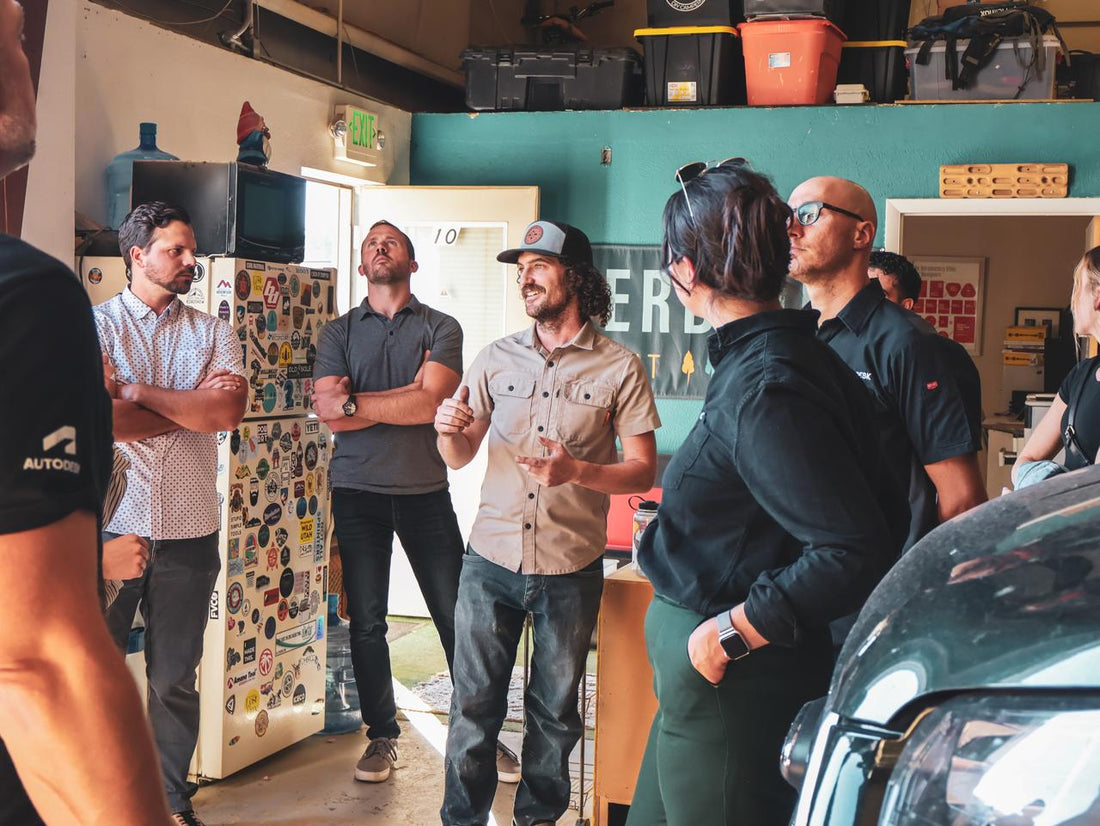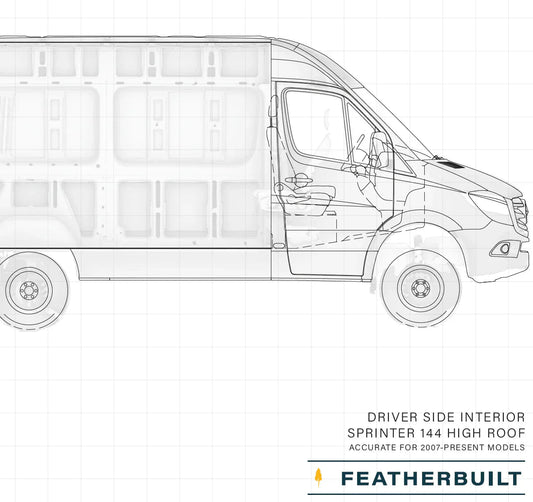
Why Having a Van Conversion Budget Is Important
Patrick BesedaBecause halfway through your build is a bad time to find out you're broke.
Ever tried building a van with zero plan?
It usually ends with someone googling “can I sleep in an unfinished cargo van” at 2 a.m.
We’ve seen it, we’ve lived it, and—if you’re reading this—we’d like to help you avoid it.
Whether you’re going all in on a full-time setup or building a weekend warrior rig, having a real, working budget is your best defense against the two most dangerous phrases in van building:
“We’ll figure it out later”
“It can’t cost that much… right?”
Spoiler: it can. And it does. Let’s fix that.
Budgeting Basics (aka Where All Your Money Actually Goes)
The big three budget buckets:
Materials
Insulation, plywood, electrical, plumbing, fasteners, finishes… it adds up fast.
That bamboo ceiling you saw on Pinterest? Gorgeous. Also $500+ in materials alone.
Tools
You will need tools. Some of them you might already have, others (like a rivnut gun or step-up bit) will sneak up on you like tiny budget ninjas.
Pro tip: renting or borrowing is a great way to save if you’re not a frequent builder.
Unexpected Costs
These are the real killers. Think:
- Shipping delays that mean you have to rebuy something locally
- Screwing up a panel cut and needing to reorder
- That one van wall that just… won’t cooperate
💬 Real-Life Example:
One customer budgeted $12,000 for their build.
They spent $9,500 by the time they were halfway done.
Why? Forgot to factor in tax, shipping, and tools they didn’t own.
It’s not glamorous, but budgeting is your build’s secret weapon. Get clear on where your money’s going, and the process suddenly gets way smoother (and less panic-y).
Costly Mistakes to Avoid
Let’s save you a few headaches:
Budgeting just for materials
If you’re not tracking tools, fasteners, adhesives, paint, and everything in between… you’re flying blind.
No contingency fund
Always give yourself a buffer (10–20%) for things going sideways. Because they will. That’s not pessimism—it’s experience.
Assuming labor is free
Your time has value. Even if you’re DIY-ing it, don’t underestimate how long things take.
Buying before planning
We get it. It’s fun to shop for gear. But if you buy a fridge before you design the cabinet it goes in, you might be designing around the fridge instead of building efficiently.
Featherbuilt Customer Case Study
Lindsey, one of our early customers started her build with a solid $10K plan.
Halfway through, she’d already hit $8,000—and hadn’t bought flooring or installed her electrical.
Her mistake? “I underestimated what everything else costs. I thought panels and insulation were most of it… but it’s all the in-betweens that add up.”
Fast forward to today, Lindsey travels full-time in her rig, smart budget spreadsheet and all. (And gummy bears. She’s always got those.)
Moral of the story: budgeting = freedom to build smarter.
Grab the Free Van Conversion Budget & Task Tracker
We made a free downloadable tracker to help you:
- Plan out your categories and expected spend
- Track your progress and real expenses as you go
- Avoid the “oh no” moments (well, at least some of them)
It’s spreadsheet nerd heaven—and it actually works.
Download it here →
One Last Reality Check
Van conversions aren’t cheap. But they don’t have to be chaotic.
A little planning now means fewer “what did we just do?” moments later.
Plus, if you're organized, you get to be that person who says, “I actually came in under budget.”
Which, let’s be honest, feels almost as good as that first cup of coffee with the back doors open.


